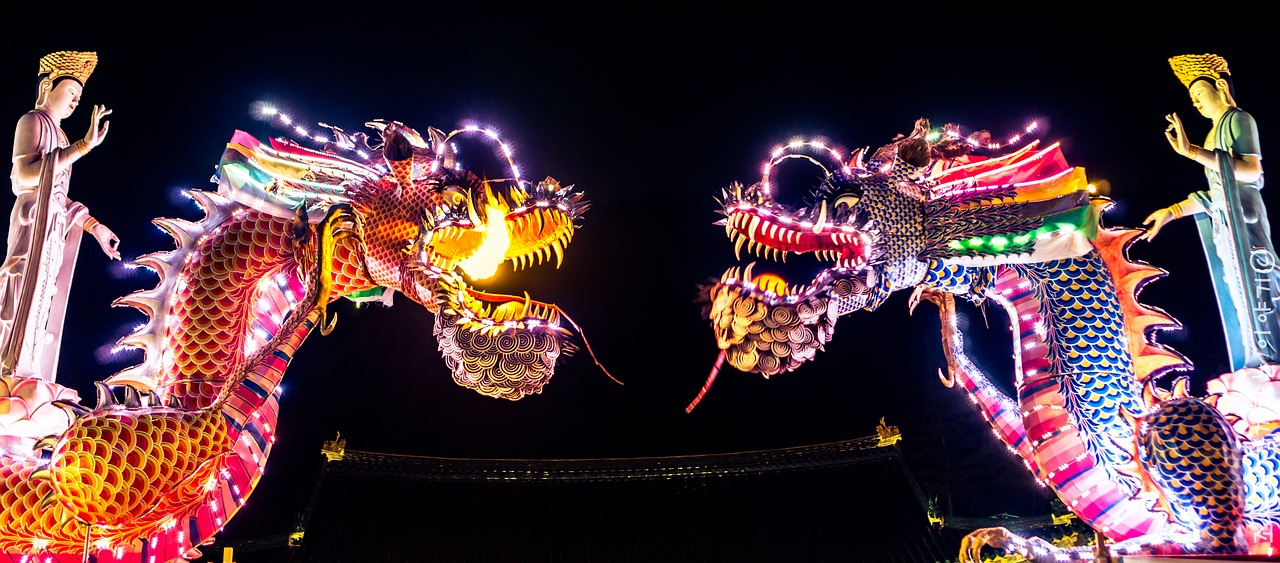The Mystery of the Ancient Chinese Dynasties' Influence
Have you ever wondered how the ancient Chinese dynasties continue to shape our world today? The legacy of these dynasties goes far beyond history books, influencing our society, culture, and governance in profound ways. Let's delve into the secrets that have been passed down through centuries, guiding civilizations and leaving a lasting impact on the world as we know it.
From the Xia Dynasty, the first recorded Chinese dynasty, to the Qing Dynasty, each ruling period brought forth unique contributions that have stood the test of time. The Xia Dynasty laid the foundation for future rulers, setting the stage for the rich tapestry of Chinese traditions and customs we see today. Their influence reverberates through the ages, shaping cultural practices and societal norms.
As we move through history, the Tang Dynasty emerges as a beacon of artistic brilliance. This golden age of Chinese civilization witnessed a flourishing of art, poetry, and music that continues to inspire creative expression worldwide. The echoes of Tang Dynasty's artistic achievements can still be heard in contemporary works, showcasing the enduring impact of ancient creativity.
The philosophical teachings of the Zhou Dynasty introduced ethical and moral principles that have guided generations. Confucianism and Daoism, born during this period, have left an indelible mark on Chinese society, influencing values, beliefs, and governance structures. The wisdom of the Zhou Dynasty continues to shape our understanding of morality and ethics.
Turning our gaze to the military strategies of the Han Dynasty, we uncover a legacy of conquest and diplomacy that expanded China's reach across lands and seas. The Han Dynasty's innovations in warfare paved the way for future military tactics, leaving a mark on the strategic landscape of the ancient world. Their legacy of strength and resilience endures through the annals of history.
The Song Dynasty ushered in a new era of technological advancement, revolutionizing communication, finance, and navigation. Inventions such as printing, paper money, and compasses transformed daily life, propelling China into a period of unprecedented innovation. The technological marvels of the Song Dynasty laid the groundwork for modern progress and development.
The Ming Dynasty's architectural marvels stand as testaments to imperial power and prestige. The Great Wall and the Forbidden City, among other grand structures, showcase the ingenuity and grandeur of Ming Dynasty architecture. These monumental achievements continue to captivate visitors and scholars alike, symbolizing the heights of Chinese craftsmanship and engineering.
Under the Qing Dynasty, economic reforms and trade policies reshaped China's role in the global economy. Facilitating commerce and cultural exchange, the Qing Dynasty propelled China onto the world stage, establishing a legacy of economic influence that reverberates to this day. Their forward-thinking policies set the stage for China's emergence as a global economic powerhouse.
The social structures of the Yuan Dynasty, established by the Mongol Empire, offer insights into governance systems and societal hierarchies of ancient China. The Yuan Dynasty's impact on Chinese society and political organization laid the groundwork for future dynasties, shaping the course of history and influencing generations to come.

Legacy of the Xia Dynasty
Exploring the lasting impact of ancient Chinese dynasties on modern society, culture, and governance, uncovering the secrets that have shaped civilizations for centuries.
The Xia Dynasty holds a significant place in Chinese history as the first recorded dynasty, laying the foundation for the rich tapestry of Chinese civilization. Known for its innovative irrigation systems and bronze casting techniques, the Xia Dynasty's legacy continues to influence modern agricultural practices and metallurgy. The legendary figure of Yu the Great, credited with taming the floods and establishing the Xia Dynasty, symbolizes resilience and leadership in the face of adversity.

Artistic Achievements of the Tang Dynasty
The Tang Dynasty, often referred to as the golden age of Chinese civilization, was renowned for its remarkable artistic achievements that continue to influence creative expression to this day. During this prosperous period, art, poetry, and music flourished, reflecting the cultural richness and sophistication of the era.
One of the most significant artistic achievements of the Tang Dynasty was the development of Tang poetry, characterized by its lyrical and expressive nature. Poets such as Li Bai and Du Fu crafted timeless verses that captured the beauty of nature, the complexities of human emotions, and the grandeur of the imperial court.
Furthermore, Tang artists excelled in various forms of visual arts, including painting and calligraphy. The dynasty's artists created exquisite landscapes, vibrant portraits, and intricate brushwork that showcased their mastery of technique and creativity.
Music also played a vital role in Tang culture, with the development of new musical instruments and compositions that enriched the courtly and folk music traditions. The elegant melodies and harmonies of Tang music reflected the sophistication and refinement of the era.
Moreover, the Tang Dynasty's artistic achievements extended beyond individual works to influence subsequent generations of artists and creators. The legacy of Tang artistry can be seen in the continued reverence for traditional Chinese painting, poetry, and music, preserving the dynasty's cultural contributions for posterity.

Philosophical Teachings of the Zhou Dynasty
The Zhou Dynasty, known for its profound philosophical teachings, left a lasting impact on Chinese thought and culture. One of the most influential philosophies to emerge during this time was Confucianism, founded by Confucius. This ethical and moral system emphasized the importance of family, respect for elders, and the cultivation of virtue in individuals and rulers alike. Confucianism promoted social harmony through adherence to rituals, filial piety, and the Five Relationships, which outlined proper conduct in various social roles.
Alongside Confucianism, the Zhou Dynasty also saw the rise of Daoism, a philosophical and spiritual tradition attributed to Laozi. Daoism focused on living in harmony with the natural order, embracing simplicity, spontaneity, and the concept of the Dao, or the way. Followers of Daoism sought to cultivate inner peace, balance, and alignment with the rhythms of nature, advocating for a non-interventionist approach to governance and life.
These philosophical teachings of the Zhou Dynasty laid the foundation for moral values, societal norms, and political ideologies that continue to influence Chinese society and global thought today. The enduring legacy of Confucianism and Daoism can be seen in various aspects of modern life, from ethical principles and educational systems to governance structures and cultural practices.

Military Strategies of the Han Dynasty
The Han Dynasty, known for its military prowess and strategic innovations, played a crucial role in shaping ancient China's territorial expansion and diplomatic relations. One of the key military strategies employed by the Han Dynasty was the use of well-trained infantry and cavalry units, supported by advanced weaponry such as crossbows and siege engines. This combination of skilled soldiers and sophisticated armaments enabled the Han forces to achieve victories on the battlefield and establish dominance over rival states.
Furthermore, the Han Dynasty implemented a system of military conscription, requiring able-bodied men to serve in the army for a set period. This ensured a constant supply of trained soldiers and maintained a strong defense against external threats. The development of military fortifications, such as the construction of the Great Wall, also played a significant role in safeguarding the empire's borders and securing trade routes.
In addition to traditional warfare tactics, the Han Dynasty utilized diplomatic strategies to form alliances and establish tributary relationships with neighboring states. By fostering political alliances and trade agreements, the Han rulers were able to expand their influence beyond military conquests and maintain stability within the empire.
The military success of the Han Dynasty can be attributed to the strategic vision of its leaders, who prioritized both offensive and defensive capabilities to ensure the security and prosperity of the empire. Through a combination of military strength, diplomatic finesse, and technological advancements, the Han Dynasty laid the foundation for future military strategies and established a legacy of military excellence that influenced subsequent dynasties in China.

Technological Advancements of the Song Dynasty
The Song Dynasty stands out in history for its remarkable technological advancements that revolutionized various aspects of Chinese society. During this period, significant progress was made in fields such as printing, paper money, and compasses, which had a profound impact on communication, finance, and navigation.
One of the most notable technological innovations of the Song Dynasty was the invention of woodblock printing, which allowed for the mass production of books and documents. This advancement played a crucial role in the dissemination of knowledge and the preservation of cultural heritage, contributing to the intellectual development of Chinese civilization.
In addition to printing, the Song Dynasty also introduced the use of paper money as a medium of exchange, replacing the cumbersome barter system. This innovation facilitated trade and commerce, stimulating economic growth and laying the foundation for modern banking systems.
Furthermore, the development of the magnetic compass during the Song Dynasty revolutionized navigation at sea. By harnessing the Earth's magnetic field, Chinese sailors were able to accurately determine direction, enabling safer and more efficient maritime exploration and trade routes.
Moreover, the Song Dynasty made significant advancements in agricultural technology, such as the invention of the iron plow and water-powered mills. These innovations increased agricultural productivity, leading to surpluses that supported urbanization and population growth.
Overall, the technological achievements of the Song Dynasty not only propelled China to the forefront of innovation but also had a lasting impact on global progress. The legacy of these advancements continues to shape modern society, demonstrating the enduring influence of ancient Chinese dynasties on the world.

Architectural Marvels of the Ming Dynasty
During the illustrious reign of the Ming Dynasty, China witnessed the creation of architectural marvels that still stand as testaments to the empire's grandeur and sophistication. One of the most iconic structures from this era is the Great Wall, a colossal fortification that stretches for thousands of miles across the northern border of China. Built to defend against invasions from nomadic tribes, the Great Wall is a symbol of strength and resilience, showcasing the ingenuity and engineering prowess of the Ming Dynasty.
Another remarkable architectural achievement of the Ming Dynasty is the awe-inspiring Forbidden City in Beijing. Serving as the imperial palace for almost 500 years, this sprawling complex of palaces, halls, and gardens is a masterpiece of traditional Chinese architecture. The intricate design, vibrant colors, and intricate details of the Forbidden City reflect the opulence and power of the Ming emperors, offering a glimpse into the lavish lifestyle of the royal court.
Furthermore, the Ming Dynasty left a lasting legacy through its innovative approach to city planning and construction. The city of Nanjing, for example, was transformed into a bustling metropolis with wide avenues, grand temples, and majestic city walls. The meticulous urban design and architectural ingenuity of Ming-era cities continue to inspire urban planners and architects to this day, showcasing the enduring influence of this remarkable dynasty.

Economic Policies of the Qing Dynasty
The Qing Dynasty, known for its economic prowess and innovative policies, implemented a series of reforms that transformed China's economic landscape and strengthened its position in the global market. One of the key economic policies of the Qing Dynasty was the establishment of a state monopoly on certain industries, such as salt and iron production. This monopoly allowed the government to control prices, regulate quality, and generate substantial revenue to fund its military and administrative expenses.
In addition to monopolies, the Qing Dynasty also promoted trade and commerce by opening up ports for foreign trade and encouraging the development of merchant guilds. This facilitated the exchange of goods and ideas between China and other countries, leading to a flourishing economy and cultural exchange. The dynasty's emphasis on trade expansion and infrastructure development laid the foundation for China's future economic growth and global influence.
Furthermore, the Qing Dynasty introduced innovative financial policies, such as the use of paper currency and the establishment of a national banking system. These advancements in finance and banking not only streamlined economic transactions but also boosted consumer confidence and investment in various industries. The dynasty's forward-thinking economic strategies set a precedent for modern financial systems and paved the way for China's economic prosperity in the centuries to come.

Social Structures of the Yuan Dynasty
The Yuan Dynasty, established by the Mongol Empire under the leadership of Kublai Khan, introduced significant changes to the social structures of ancient China. This period witnessed a fusion of Mongol and Chinese customs, creating a unique societal framework that influenced governance and cultural practices.
One of the key features of the Yuan Dynasty's social structure was the division of society into four classes: the Mongols, the Semu people (mainly Central and West Asians), the Han Chinese, and the Southern Chinese. This classification system determined individuals' rights, privileges, and social status based on their ethnic origin and relationship to the ruling Mongol elite.
The Mongols, as the ruling class, held the highest positions of power and authority, enjoying privileges that set them apart from the other social groups. They implemented policies that favored their own interests while also integrating aspects of Chinese administration to maintain control over the vast empire.
Moreover, the Yuan Dynasty introduced a system of governance that centralized authority in the hands of the emperor and his court, diminishing the influence of regional officials and aristocrats. This centralized structure aimed to streamline administration and ensure uniformity in governance across the empire, promoting stability and efficiency.
Despite the hierarchical nature of Yuan society, there were instances of cultural exchange and assimilation between different ethnic groups. Interactions between the Mongols and the Chinese population led to the sharing of traditions, languages, and artistic practices, contributing to a rich tapestry of cultural diversity within the empire.
Additionally, the Yuan Dynasty's social structures reflected the nomadic roots of the Mongol rulers, with elements of pastoral and tribal organization influencing governance and societal norms. This blend of nomadic customs with Chinese traditions created a dynamic social landscape that shaped interactions between various ethnic groups and influenced daily life.
In conclusion, the social structures of the Yuan Dynasty exemplify a period of cultural fusion and adaptation, where diverse ethnic groups coexisted within a centralized imperial system. The legacy of this unique societal framework continues to resonate in modern China, highlighting the enduring impact of the Mongol-led dynasty on Chinese history and civilization.
Frequently Asked Questions
- What is the significance of ancient Chinese dynasties?
Ancient Chinese dynasties hold immense significance as they laid the foundation for modern Chinese culture, governance, and societal structures. Their legacies continue to influence various aspects of Chinese society, from art and philosophy to technology and military strategies.
- How did the Xia Dynasty impact subsequent rulers and traditions?
The Xia Dynasty, as the first recorded Chinese dynasty, played a crucial role in shaping the historical narrative of China. Its influence on subsequent rulers and traditions can be seen in the establishment of early Chinese political systems, cultural practices, and societal norms.
- What are some key artistic achievements of the Tang Dynasty?
The Tang Dynasty is renowned for its flourishing art, poetry, and music, which are considered a golden age of Chinese civilization. The artistic achievements of the Tang Dynasty have had a lasting impact on creative expression and cultural development in China.
- What philosophical teachings are associated with the Zhou Dynasty?
The Zhou Dynasty is known for its ethical and philosophical principles, including the development of Confucianism and Daoism. These teachings have significantly influenced moral values, societal norms, and governance systems in Chinese history.
- How did the Han Dynasty contribute to military strategies?
The Han Dynasty made significant military innovations and employed strategic tactics that expanded China's territory and influence through conquests and diplomatic alliances. These military achievements played a crucial role in shaping the geopolitical landscape of ancient China.
- What technological advancements were pioneered by the Song Dynasty?
The Song Dynasty was known for its groundbreaking scientific discoveries and technological advancements, such as printing, paper money, and compasses. These innovations revolutionized communication, finance, and navigation, contributing to the progress of Chinese civilization.
- What are some notable architectural marvels of the Ming Dynasty?
The Ming Dynasty left a lasting legacy of grand architectural achievements, including the Great Wall and the Forbidden City. These structures symbolize the power and prestige of imperial China, showcasing the architectural prowess of the Ming Dynasty.
- How did the Qing Dynasty influence global commerce and cultural exchange?
The Qing Dynasty implemented economic reforms and trade policies that facilitated global commerce and cultural exchange, positioning China as a prominent player in the world economy. Its policies had a profound impact on China's trade relationships and international standing.
- What social structures were established during the Yuan Dynasty?
The Yuan Dynasty, established by the Mongol Empire, introduced unique social hierarchy and governance systems that impacted Chinese society and political organization. These structures reflected the influence of the Mongol rulers on Chinese governance during that period.



















